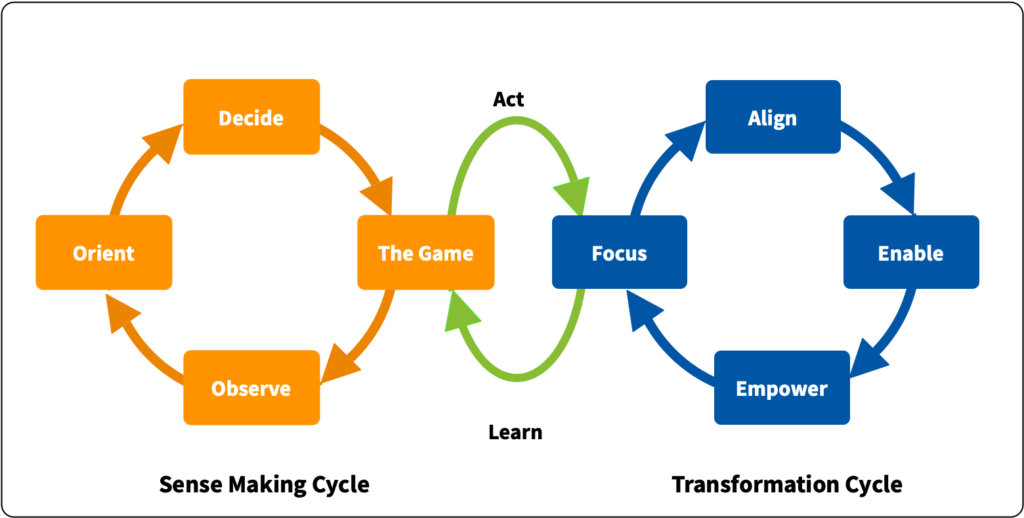Agile Evolution is a business agility framework.
It focuses on learning, organizational development, and helping organizations evolve faster. It focuses on principles and values.
It is agnostic to agile practices, so it can be used in combination with one or more other frameworks.
Although learning is also included in other agile frameworks, it is not referred to as a “first-class citizen” in the description. It seems like an afterthought. It is time to put measures to develop an agile mindset and culture at the center of the discourse.
Not a blueprint – Agile is a way
The introduction of Agile is not a normal change, but requires a fundamental change in habits, practices, collaboration, product development and ultimately culture.
This cannot be accomplished in a single step. When you embark on this journey, only the first steps are usually visible; there is no complete plan or timetable.
However, there are some experiences that can help steer efforts in a direction that has a high probability of success:
- Determine the desired outcomes to evaluate an initial plan
- Find the right drivers and mindsets that enable sustainable change towards agility.
- Identify the stakeholders/target groups for the change steps and measures
- Start with the measures that provide quick feedback, remove the biggest obstacles and generally have the greatest impact
Bootstrap – readiness for the changeover
- Opt for Agile
- Check prerequisites and develop initial goals
- Find out more about the status quo
- Building a leading coalition
- Changeover
The agile transition is a massive change. It involves a change in structures, culture and roles. You will not like everything you encounter along the way. It therefore needs a strong leadership team, a lot of communication and an initial plan – although this plan will be modified in the light of the experience gained from the first transition steps.
Transition
- Decide on an initial scope and how you want to start
- Start of communication
Developing the skills and abilities of people and teams - Development of suitable structures
Driving evolution forward
- Continuous identification, prioritization, control and evaluation of the next steps
- Continuously re-evaluate your assessment and adjust your focus, approach and scope.

